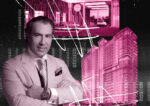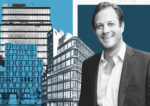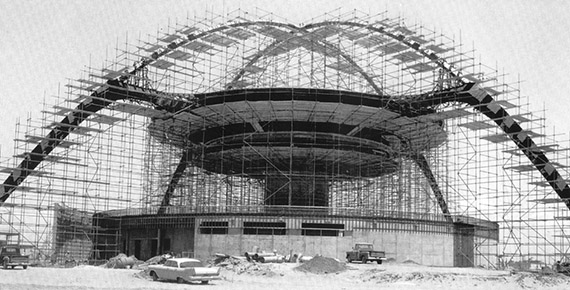In this monthly column, The Real Deal takes a dive into L.A.’s storied real estate history.
April, 1904 — “Completion” of Sunset Boulevard
Less than six months after incorporating, Hollywood celebrated the “completion” of Sunset Boulevard, a crucial link between the budding community and what then existed of Los Angeles, the Los Angeles Times reported. The new roadway connected with the easternmost end of Hollywood’s main drag, Prospect Avenue, later renamed Hollywood Boulevard. Before then, traveling the 10 miles between Hollywood and Los Angeles was still a somewhat lengthy excursion, often made by way of an “electric road,” or single-track streetcar that offered hourly service. The new boulevard, a “first class improvement” in those days, was 100 feet wide with a 75-foot curb on either side and lined by shrubbery for a “continuous park effect.” The roadway was graded and coated with decomposed granite, which made for a “hard, clean roadbed, the delight of drivers and automobilists.”
April, 1961 — LAX joins the Jet Age
A mere 55 years ago this month, the $50 million project that brought the Los Angeles International Airport into the “jet age” gave the Los Angeles Times a preview before beginning operations later that summer. Plans for the ambitious construction project included a “ski-lift tram system” between ticketing buildings, “telescopic bridges” connecting waiting areas to the doors of airplanes, and a 70-foot gourmet restaurant that would overlook the airport from the Theme Building, an iconic flying saucer-like structure now considered a historic cultural monument. At the time, reporters seemed dubious the project would be completed on schedule, yet painted a romantic picture of what the experience of flying from LAX would be like.
“You’ll drive through the main entrance…past a landscaped reflection pool in which will burn an eternal flame, ignited from Mount Olympus in Greece…then cruise past palms, jacarandas, beds of geraniums, flame trees, orchids and ferns to the ticketing building of the airline of your choice… [where] an attendant will park your car…”
L.A. architects Charles Luckman, Paul Williams and Welton Becket worked together to redesign the airport for the future of commercial flight. Then, the airport boasted a volume of seven million passengers a year, with a new capacity for up to 40 million. Last year, LAX ushered through nearly 81 million passengers.
April, 1987 — El Segundo towers sell for $270M
Thirty years ago, Beverly Hills investment firm Pacific Financial Group closed on what was considered one of the biggest deals in Southern California at the time, spending $270 million for three office towers near the airport, the Los Angeles Times reported. The Pacific Corporate Towers at 100, 200 and 222 N. Sepulveda Boulevard, previously known as Prudential Airport Towers, were purchased from the Prudential Insurance Company of America and together comprised 12 acres and about 2 million square feet. Richard Ziman, who led the deal, later became known for his impeccable timing. His firm, which sold the towers just a couple years later, was one of the lucky few to purchase property at the height of the 1980s real estate boom and still sell it in time to make a profit.




